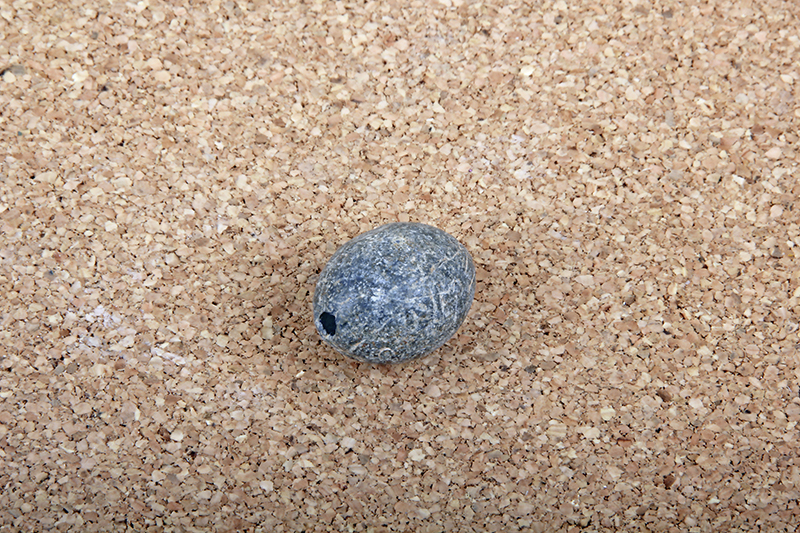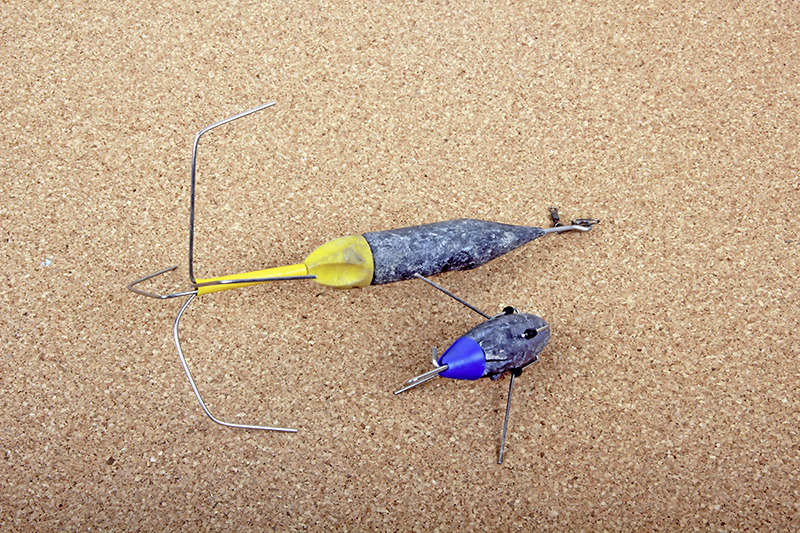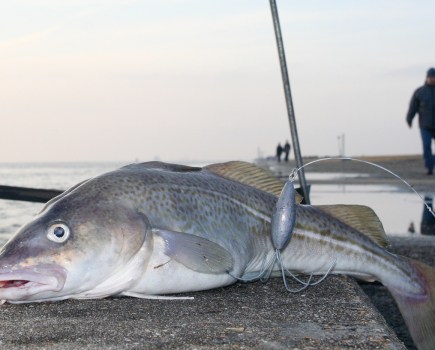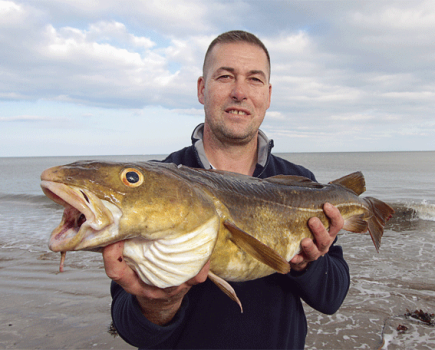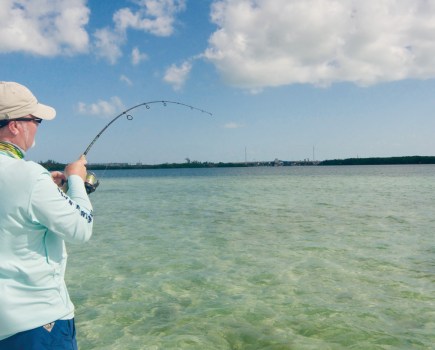When I was growing up fishing the Thames Estuary we only had a few choices when it came to lead weights. We either used a breakout grip lead for uptiding or a 1lb bell style sinker when downtiding. If you were really lucky you’d get to use a 12oz watch lead, but they were rarer than mullet’s teeth in my neck of the woods.
Long gone are the days of tangled traces due to a bell lead falling over on the seabed and rolling around in circles in the tide. Nowadays there is a huge array of sinker styles to choose from to cover every fishing situation, so I thought it would be a good idea to cover my top seven, all of which I use at some point during the fishing year.
1) GRIP LEADS
There are two types of grip lead available. The more traditional is the breakout style, which has four wires held in place via rubber tubes or beads. These four wires are actually just two wires, so if one spike breaks out, then that renders two of the four spikes out.
They’re designed for uptide fishing, to anchor your bait away from the boat up in the tide. When a fish takes your bait the added pressure pulls the wires down ‘breaking’ them out of the seabed, which in turn allows the lead to roll down the tide and signal a bite.
Another type of breakout style is the Gemini System 100+, which has four independent wires that are clipped into place in grooves on a special head attached to the lead. The grip wires on these sinkers can be broken out individually, and therefore give a tiny amount of extra gripping power. For areas with exceptionally strong tides or rocky/ snaggy seabeds the fixed grip lead is a must. Here the wires don’t break out.
There are numerous styles available, but one of the most popular is the Gemini System 100+ fixed lead, which allows you to choose between three different thicknesses and strengths of wire, from ultra stiff to springy or soft. Unlike a breakout style lead, the wires are fixed in place, often shaped into position by the user. It takes quite a lot of pressure to trip a fixed lead from the seabed.
I often use them in the Bristol Channel or River Mersey, where fierce tides make short work of traditional breakout style leads.

2) CANNON BALLS
The cannonball lead has become very popular with south coast anglers in recent years. They have a number of advantages such as being able to roll around the seabed to search out gulleys and depressions where fish might be lurking.
I quite often use a cannonball lead on a boom set-up when drift fishing with lures over wrecks and reefs. They’re extremely hydrodynamic and aren’t as prone to spinning as some of the other lead shapes, which in turn helps reduce tangles.

3) PEAR LEADS
The pear shape is perhaps one of the most common sinkers used by boat anglers today. Designed with the bulk of the weight being situated at the wider base, tapering slowly upwards to a moulded-in eye or swivel, this style is perfect for all manner of fishing situations.
I use them in sizes from 2oz up to 12oz, which covers me for lure fishing, drifting for plaice over rough ground, fishing at anchor for smoothhounds or bass, and even for tope or conger eels in deeper water.
Definitely a must-have in my tackle box. I often carry a selection of 2, 3, 4 and 6oz pear leads in my box for fishing lures on a fixed lead rig (see page 38, issue 531) when targeting summer cod, bass and pollack.

4) BLOPEDO STYLE
The Bopedo style of lead weight is perhaps one of the most instantly recognisable to boat anglers. This is my go-to lead when fishing deep water with strong tides. These sinkers are available in a range of sizes including 12oz, 16oz (1lb), 20oz, 24oz and 32oz (2lb), so they cover most deep-water fishing situations.
It’s a tried and tested design, with four flat sides but a streamlined design, they get down quickly and tend to hold the bottom really well without rolling around all over the place. This is what I like to use when searching out conger eels over wrecks, or when winter cod fishing off the Needles, Isle of Wight.

5) COATED AND COLOURED
Coated leads have been around for decades on the carp fishing scene, but they really only started to appear in sea fishing about five or six years ago.
Most of the coloured leads are powder-coated with a plastic material, and this helps protect the lead inside. Although there is no hard and fast evidence that a coloured lead attracts fish, there is a school of thought that thinks this way.
I’m not convinced, but I believe that having coloured lead weights in a match-fishing situation really helps. You can instantly grab the desired weight required if you know the colour scale in your box – for instance, blue is 90g, red is 60g etc.
More recently we’ve seen an increase in luminous, glow in the dark leads. Again these are powder-coated, and are a brilliant idea for beach anglers fishing at night. Again I’m open to suggestion with regards to their fish-attracting qualities.

6) WATCH LEADS
If you’ve ever been plaice fishing on the drift then you’ll know what these are. The watch lead is the perfect choice when fishing over clean sand on the drift, and for a very good reason.
The design is such that as the weight is dragged along, the small nodules on it, coupled with the open centre, actually kick up puffs of sand. This is said to mimic small baitfish, even sandeels, which is why they are so popular with anglers targeting plaice, turbot and brill.
Of course you don’t just have to use them while fishing on the drift for flatfish. I like to use a heavy watch lead when fishing at anchor sometimes, especially if I want to pin my bait hard to the seabed without fear of it rolling around in the tide.
I also use the really small 2oz watch leads to great effect when fishing in shallow water. They make great casting leads when fishing a single ragworm or belly strip of mackerel. I like to cast across the tide and let the tide carry the lead along. This tactic has caught me numerous bass and turbot when traditional methods have failed.
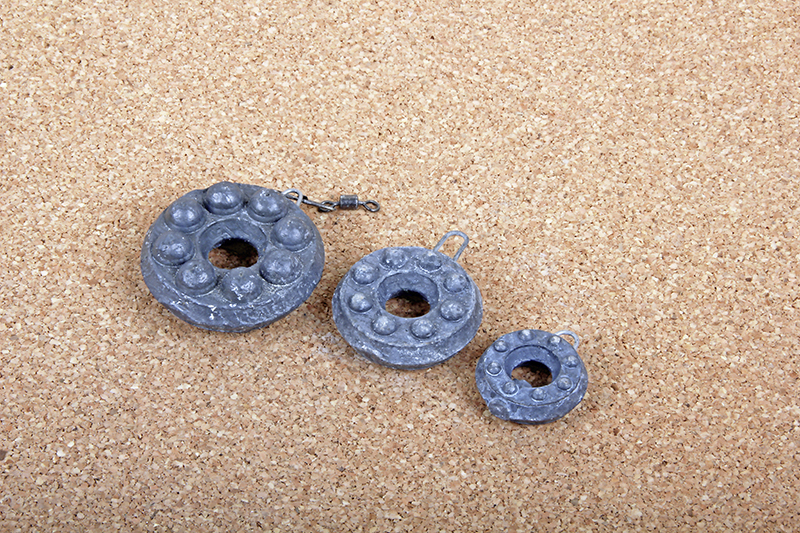
7) DRILLED BULLETS
The humble drilled bullet is a very often overlooked and underrated piece of kit. In fact, while doing the pictures for this piece I discovered that I only have one left in my lead box, so I must remember to pick some more up the next time I’m at a shop that sells them.
Drilled bullets come in two shapes, either round or egg-shaped. They’re primarily used on float-fishing rigs, but if you have a selection in smaller sizes you can fine-tune a rig to perfection when fishing a live sandeel for bass. This type can also be used to great effect when ‘trotting’ a river estuary for flounders.
The great thing about using a drilled bullet is that it gives you a direct line to a hooked fish, because your line passes through the middle of the weight, rather than needing a swivel or boom to hold it onto your main line.
